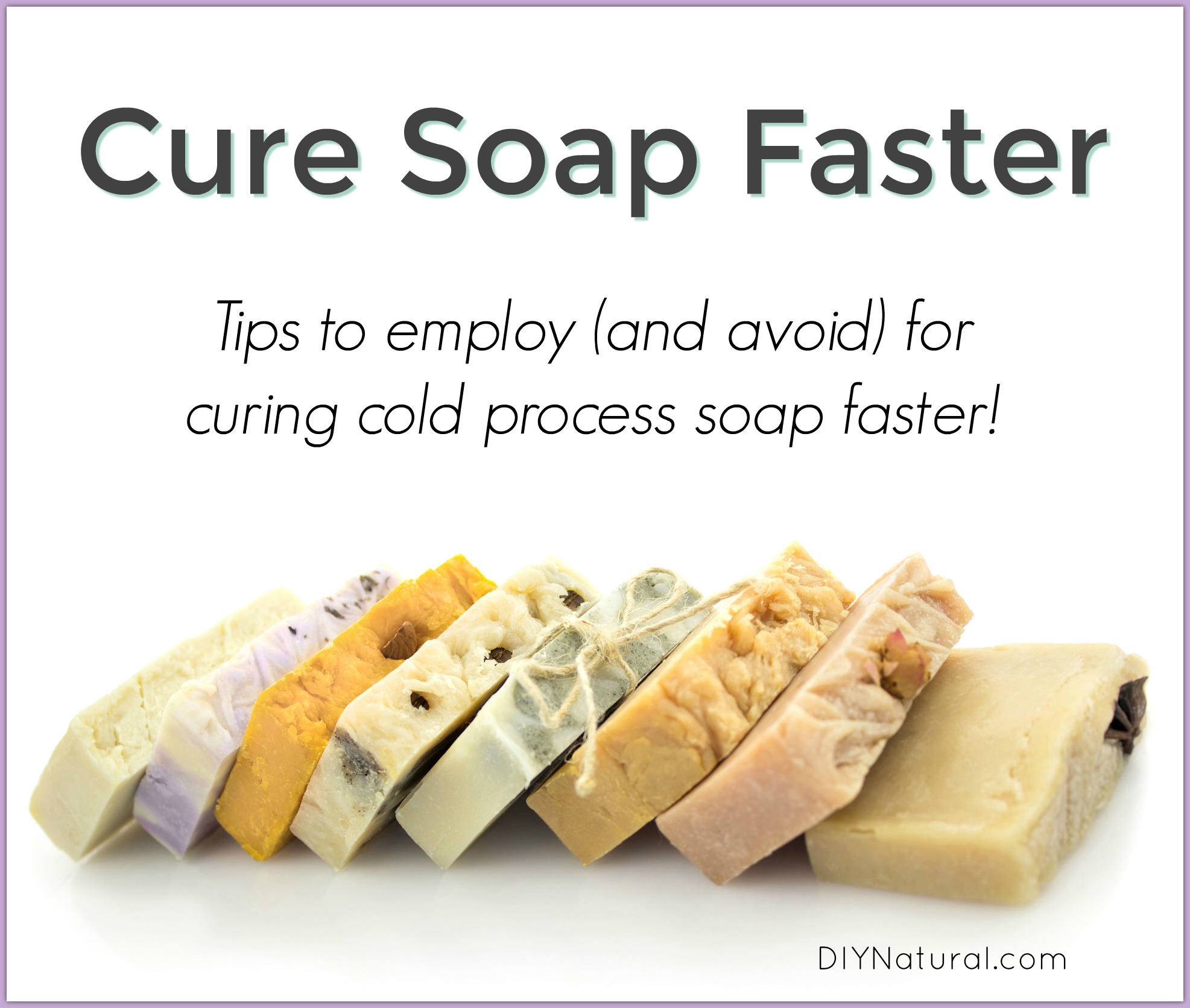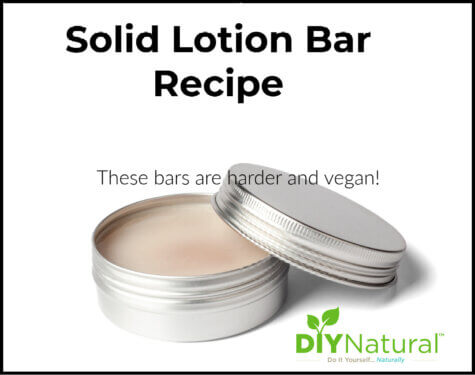
Curing soap takes a while and can test your patience. The good news is there are a few things you can do to speed up the curing process.
One of the worst things about making cold process soap is waiting for it to cure. This can take from 4-6 weeks, sometimes more, depending on the recipe used. Over the years, I’ve come up with a few ways to help speed up that process.
Curing Takes Awhile
Cold process soap must be cured for a while to neutralize the lye in it. Lye, or sodium hydroxide, is a caustic soda that converts oils and water into soap. Why use it if it’s caustic? Because nothing else will turn the fats and water into soap. There is no substitute. However, after completely curing, no lye remains in the bars of soap. (Read more about lye in soap making here.)
While soap will form bubbles within the first 24 hours, that doesn’t mean it’s done. Most soaps need 4 or more weeks to cure, or to complete the saponification process, during which fats, water, and lye turn into soap. The longer it sits, the harder and milder it will become.
Curing Soap Faster: Speed up the process
While it’s true that most soaps take 4-6 weeks to fully cure, there are ways to reduce that time.
Reduce the humidity
Most people make soap in their homes, or if they are lucky enough, in their workshops. I’m fortunate to have my workshop in my dining room. The bad thing is that it’s a very old house with no air conditioning. I keep the windows closed to keep the dust at a minimum, but the humidity still gets in. So I built a curing chamber. I have a shelf unit that I put the soap on, then I drape a shower curtain over the whole thing and put my dehumidifier in with the soap. I run it for a week or so to get most of the moisture out of the area. This is usually enough to cut a week or so off of the cure time. Alternatively, you could use a spare closet as your curing chamber.
Zeolites
Zeolites are rocks that pull moisture out of the air. These are often used in closets to keep the damp out. They can be used for the same purpose as the dehumidifier. Even just keeping them in the same area helps some. You can find zeolite rocks here.
Charcoal in pans could help too, but they could also absorb the scent you have used in your soap. If you use it, keep it a good distance from the soap itself.
Fans
Fans help keep moisture from settling on soaps, allowing them to dry faster. As water evaporates from the soap, fans help whisk that moisture away.
Use less water
Using a water reduction will help as well. Reduce the amount of water in the recipe by 7-10% and the soap will cure faster. The amount of lye and oils stays the same, so there is no danger of the soap becoming lye heavy and being too harsh. I use a water reduction in almost all of my recipes now and my cure time is about 3 weeks for most of my soaps.
Space heater
Heat may help too. I have a small heater fan that I use if the weather is cooler. The heat seems to help evaporate more of the moisture.
Good Airflow
Circulation can’t be understated. Be sure that your bars are not touching each other and that there is airflow between layers. If soap is touching while it is curing, it will form moisture between the bars and it may not cure as fast as it could.
Curing Soap: Things to Avoid
Along with finding ways to cure soap faster, I’ve found some things that don’t help. Some of them even make the matter worse.
Too much lye
Adding more lye will certainly make your soap harder, but lye-heavy soap is more alkaline and will cause skin problems. Stick with the required amount of lye for your recipe. If you’re not sure of the amount, consult a lye calculator. You can find many of them online.
Using the oven
Putting your soap in the oven, even at a low temperature, will just cause melting and gooey soap. I tried it at the end of the cure time once and my soap cracked all over the surface, kind of like crazing on old china. The effect was kind of cool, but it ruined the soap.
Layering paper towels
Layers of paper towels in between soaps only make the moisture problem worse. The moisture gets trapped in the paper towels between the soaps and makes them mushy between the layers.
Dehydrators
Dehydrators don’t work either. I’m not exactly sure why, since it should be like the heater fan, but my soap turned out soft and had a sticky layer on it.
Boxing too soon
Putting it in a sealed shoe box should be done after the cure is complete. If it’s done too soon, you’ll be trapping moisture in instead of out.
Plastic wrap
Wrapping in plastic wrap does the same thing – it traps moisture inside.
Hot Process Soap Cures Much Faster
Another way to reduce cure time is to cook the soap down as you would in crockpot soap. This is known as the “hot process,” and speeds up the cure time to almost the next day. Very often you can use it right away.
Have you found ways to speed up the soap curing process? Tell us about it!
*******




If crockpot soap cures faster, why wouldn’t you use that method all the time? I’m a soap making novice so I need all the info I can get.
Hi I started out making hot processed soap with a crockpot because the thought of waiting a month or more for it to cure was crazy to me but I actually took the plunge and make some cold processed soap and I like it better. I can do more with the soap as far as decorating it and it has such a better consistency. You have more possibilities to make your soap prettier then with the hot process method but both methods have their advantages.
My last few batches I have had problems with the center of the soap. When I take it out of the molds and cut the bars the middle is darker or has empty areas. I read somewhere to put the soap in a freezer after poring into molds. Any ideas on cause of this?
You are experiencing partial gel. It can either be put in the freezer to avoid gel or covered with heavy towels to hold the heat in so it gets a full gel. It’s up to you whether to gel or not. There is no right or wrong way.
using the zeolite, it says it removes odors, wouldnt it remove the scent of the soap? please help, i love what your saying and would love to be able to use this idea to help reduce moisture.